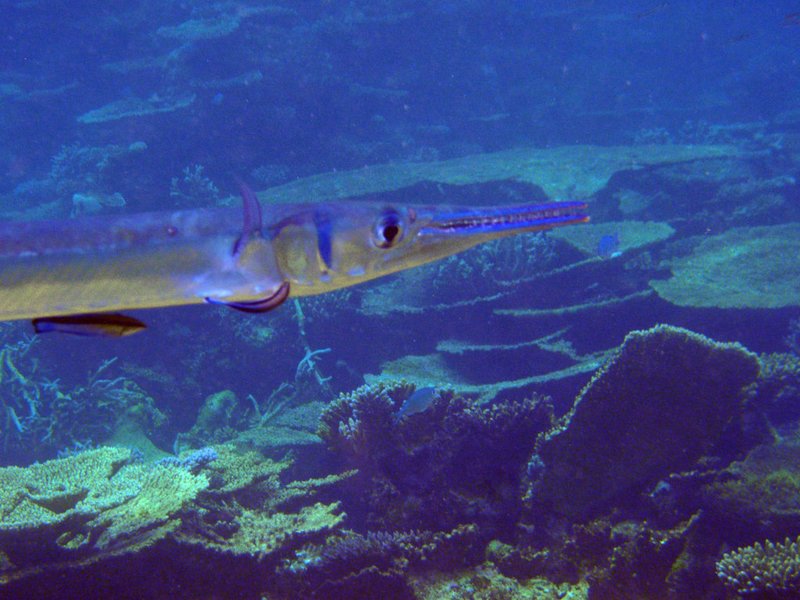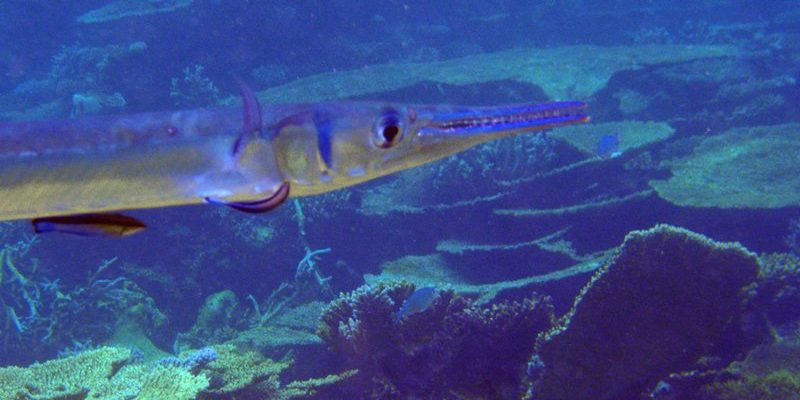
Have you ever seen a fish that looks like it’s on a mission, darting through the water with grace and precision? That’s the needlefish for you. With their slender bodies and long, pointed jaws, needlefish are often described as the sleek, speedy athletes of the ocean. They are fascinating creatures that can easily capture your imagination. Whether you’re a long-time fish enthusiast or just curious about these unique animals, needlefish offer a glimpse into the beauty and complexity of marine life.
But what sets needlefish apart? Imagine a fish that can leap gracefully above the water’s surface, slicing through the air like a miniature torpedo. This ability not only helps them evade predators but also makes them quite a spectacle to witness. In this article, we’ll dive deeper into the world of needlefish, exploring their habitat, diet, behavior, and everything else you might want to know about these intriguing fish.
What are Needlefish?
Needlefish belong to the family Belonidae, which contains over 30 different species. These fish are primarily found in tropical and subtropical oceans around the world. They are known for their elongated bodies and sharp, needle-like teeth. Because of their slender form, needlefish often resemble an arrow, which helps them swim swiftly through the water. Their unique body shape allows them to cut through waves and currents with minimal resistance.
One of the most striking features of needlefish is their mouth, which is filled with sharp teeth that are ideal for catching smaller fish and crustaceans. These fish are typically silver in color, providing them with excellent camouflage against the glittering surface of the water. This coloring, combined with their speed, makes them effective predators in their habitat. You might be surprised to learn that needlefish can grow anywhere from 1 to 3 feet long, depending on the species!
Habitat of Needlefish
Needlefish are primarily found in shallow coastal waters, estuaries, and bays. They prefer warm waters, thriving in tropical and subtropical regions such as the Caribbean Sea and the Indo-Pacific. One of the key aspects of their habitat is the presence of floating debris or vegetation. These structures provide cover for needlefish, allowing them to hunt for food while remaining hidden from larger predators.
In addition to coastal regions, needlefish can often be seen leaping out of the water in search of prey. This behavior is especially common in areas where small fish congregate. You might find them hunting in groups, using their numbers to increase their chances of a successful catch. This social interaction not only aids in hunting but also offers a level of protection from larger threats in the ocean.
Diet and Feeding Habits
Needlefish are carnivorous and primarily feed on smaller fish and invertebrates. Their diet typically includes species like sardines, anchovies, and various types of crustaceans. They are known for their impressive speed and agility when hunting, making it easier for them to catch fast-moving prey. Their sharp teeth help them secure their catch, allowing them to enjoy a meal without much struggle.
One interesting aspect of their feeding behavior is how needlefish can leap out of the water to catch prey. When they spot a group of small fish swimming near the surface, they can propel themselves out of the water at surprising speeds, snatching their meal mid-air. It’s a remarkable sight and one of the reasons why needlefish are often called the “flying fish” of the coastal waters.
| Fact | Details |
|---|---|
| Size: | 1 to 3 feet long, depending on the species. |
| Habitat: | Tropical and subtropical coastal waters, often near floating debris. |
| Diet: | Small fish, crustaceans, and occasionally plankton. |
| Speed: | Some species can swim up to 20 miles per hour. |
| Lifespan: | Around 3 to 4 years in the wild. |
Reproduction and Lifespan
When it comes to reproduction, needlefish are quite fascinating. They typically spawn in the spring and summer months, when water temperatures are warmer. Spawning usually occurs in shallow waters, where females release their eggs. The males then fertilize these eggs, which float on the surface until they hatch. This method of reproduction allows the young fish to remain hidden from predators during their vulnerable early life stages.
Young needlefish grow rapidly, reaching maturity in just a couple of years. Their lifespan in the wild generally ranges from 3 to 4 years. However, various factors, such as predation and environmental conditions, can impact their survival. In captivity, they might live longer if provided with proper care and a suitable environment. Nevertheless, the natural challenges in their habitats mean that needlefish must be quick and agile to thrive.
Behavior and Social Structure
Needlefish are known for their unique behaviors, especially when it comes to their hunting tactics. They often engage in cooperative hunting, where groups work together to corral smaller fish into tight schools, making it easier for them to catch their meals. You might be surprised to see how organized they can be, using strategic movements to maximize their hunting success.
Additionally, needlefish have a fascinating way of communicating with one another. They often display body language and movements to signal each other, helping maintain their group structure. While they are primarily solitary hunters, their social interactions play an important role in their survival, as being part of a group can help mitigate the risks posed by larger predators lurking nearby.
Conservation Status
Currently, the conservation status of needlefish varies by species. While some populations remain stable, others face threats from overfishing and habitat loss. Coastal development and pollution can significantly impact their habitats, making conservation efforts crucial. It’s essential to raise awareness about the importance of preserving coastal ecosystems to protect these fascinating fish and their environments.
Organizations and researchers are working to monitor needlefish populations and implement measures to ensure their survival. By understanding their habitats and behaviors, we can take steps to minimize the impact of human activities on these incredible creatures. Every effort counts, and supporting sustainable practices can help ensure needlefish continue to thrive in our oceans for generations to come.
FAQ
What do needlefish look like?
Needlefish are easily recognizable due to their long, thin bodies and sharp, pointed jaws. Typically, they are silver in color, which helps them blend into their surroundings in the water. This coloring, combined with their streamlined shape, makes them appear almost like an arrow as they swim.
Are needlefish dangerous to humans?
Generally, needlefish are not dangerous to humans. However, they have sharp teeth, and if they feel threatened, they may bite. It’s important to keep a safe distance if you encounter them, especially when they are leaping out of the water to avoid predators.
Can needlefish jump out of the water?
Yes, needlefish can jump out of the water, often as a hunting strategy or to evade larger predators. This impressive ability allows them to catch prey mid-air and also helps them escape danger. Watching a needlefish leap can be a remarkable sight!
How fast can needlefish swim?
Needlefish are known for their speed, with the ability to swim up to 20 miles per hour. This speed plays a crucial role in their hunting techniques, allowing them to catch smaller fish with agility and efficiency.
What is the lifespan of a needlefish?
In the wild, needlefish typically live for about 3 to 4 years. However, their lifespan can vary depending on environmental factors and threats from predators. In captivity, they may live longer if provided with proper care.
Where can I find needlefish?
Needlefish are primarily found in tropical and subtropical waters, particularly in coastal regions, estuaries, and bays. They often inhabit areas with floating debris, which provides them with cover for hunting.
How do needlefish reproduce?
Needlefish reproduce by spawning in shallow waters during warmer months. Females release eggs that float on the water’s surface, where males fertilize them. This method of reproduction allows the young fish to stay hidden from predators during their early life stages.
Do needlefish have any natural predators?
Yes, needlefish have various natural predators, including larger fish, birds, and even some marine mammals. Their speed and agility in the water help them evade these threats, but they must stay vigilant to survive.
Are needlefish considered a food source for humans?
While needlefish are not a primary food source for humans, some cultures do consume them, especially in regions where they are abundant. However, they are more commonly admired for their unique characteristics and fascinating behaviors.
What role do needlefish play in their ecosystem?
Needlefish play an important role as both predators and prey within their ecosystem. By feeding on smaller fish and invertebrates, they help maintain the balance of marine life. Additionally, they serve as a food source for larger predators, contributing to the overall health of ocean ecosystems.

